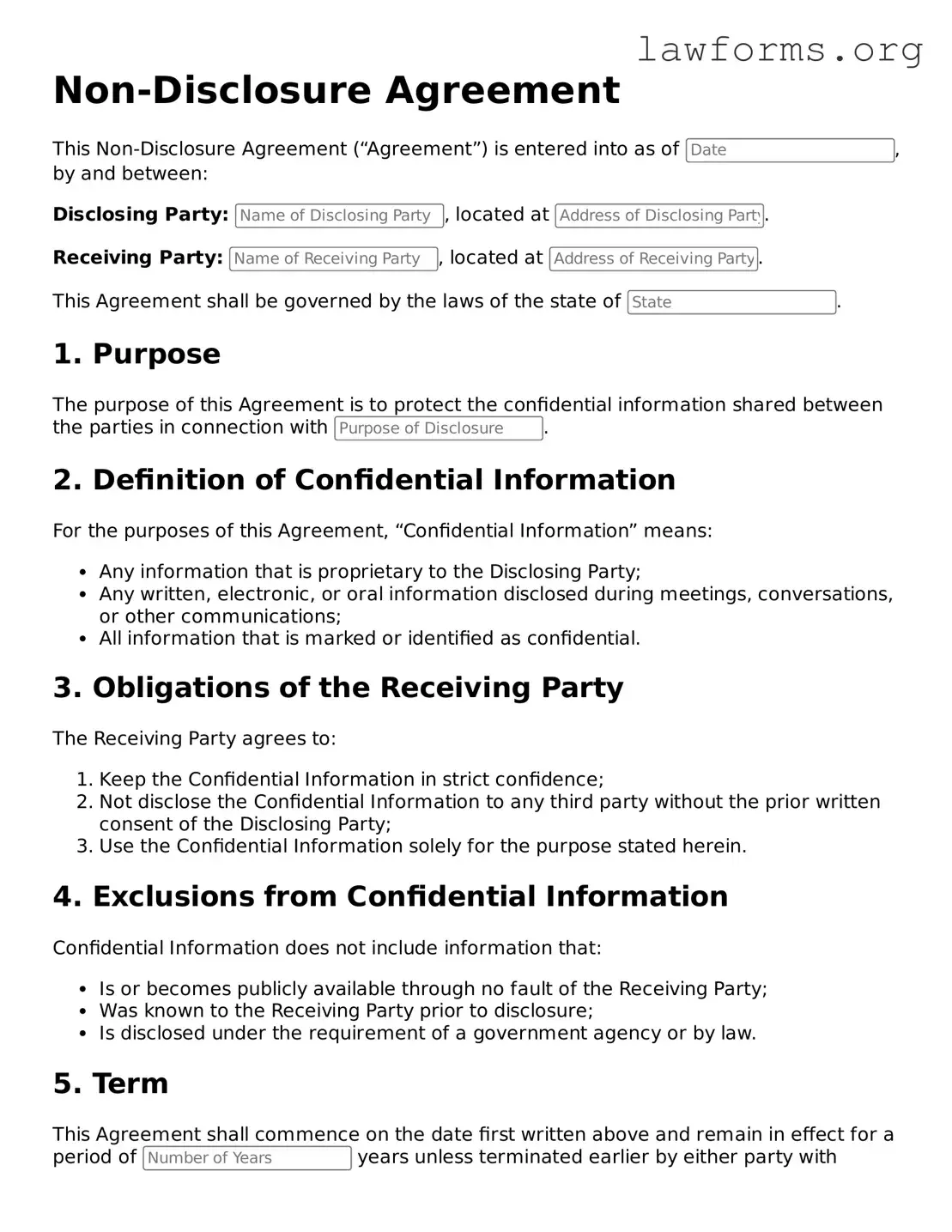Valid Non-disclosure Agreement Form
A Non-disclosure Agreement (NDA) is a legal document designed to protect confidential information shared between parties. By outlining the terms under which sensitive information can be disclosed, this form ensures that proprietary data remains secure and is not misused. If you need to safeguard your valuable information, consider filling out the NDA form by clicking the button below.
Customize Document Online
